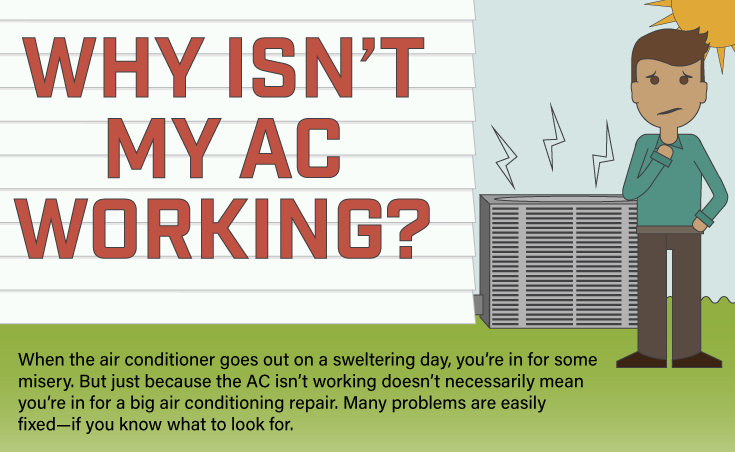Taking Full Advantage Of Comfort And Financial Savings - Tips For Optimizing Your Heat Pump Efficiency
Taking Full Advantage Of Comfort And Financial Savings - Tips For Optimizing Your Heat Pump Efficiency
Blog Article
Content Composed By-Grimes Proctor
Whether you own a heatpump or have an existing central heating boiler back up, there are a couple of things that can be done to maximize your system for effective operation. By adhering to these suggestions, you can optimize convenience and savings without straining your system or racking up energy costs.
Changing your thermostat for effectiveness is among the initial steps. Making use of zoning capacities to restrict home heating of unoccupied rooms is one more effective strategy.
1. Set Your Thermostat to the Right Temperature level
As the periods alter, balancing comfort and expense effectiveness can be a challenge. The good news is, a few straightforward tips can assist you minimize energy consumption and optimize cost savings.
Beginning by identifying the most effective temperature for your household, then establish your thermostat appropriately. Stay clear of making big raise and down in the temperature level setup, as this will cause your heatpump to cycle on and off extra frequently, using up a lot more power.
Instead, gradually reduced the temperature level during the night for a more comfortable sleeping atmosphere. Then, elevate it somewhat in the morning. Bear in mind to maintain air vents open and guided downward when heating, and up when cooling to optimize circulation.
2. Inspect Your System Regularly
A heatpump system needs minimal upkeep, yet it is very important to examine the device frequently to capture any type of troubles before they come to be severe. Tidy indoor filters on a schedule set by the supplier or when they're visibly filthy, and ensure exterior systems have at the very least 2 feet of clearance to allow for airflow.
Checking the system will certainly also consist of cleansing, tightening up electrical terminals, and running performance tests to make sure precision during heating and cooling down modes. It's suggested to have a specialist service the heatpump two times a year. Carrying out these routine services can make the most of energy savings and lengthen the life of the unit.
3. Clear Snow and Ice Around the Unit
Heat pumps are created to operate outdoors and need to be devoid of snow and ice in order to distribute air. If your heatpump is blocked by snow and can not reel in air, it will certainly toggle between heating and cooling and may overwork.
It is necessary to remove a two-foot clearance around your outside unit in order to boost air movement and prevent ice build-up. Heatpump usually get in a defrost mode in the winter season to thaw ice and snow yet this process can be troublesome if your system is blocked by excessive snow. This will certainly reduce your energy effectiveness and result in costly repair expenses in the future.
4. Check the Refrigerant Degrees
A heatpump makes use of cooling agent to cool your home in summer and warm it in winter. You can aid maximize its performance by consistently checking the refrigerant degrees.
It takes extra energy to transform the temperature level of your heatpump from a comfortable readying to a colder one than it does to maintain that temperature level. Transforming the temperature level for brief amount of times can also throw away energy.
Dripping ducted air conditioning installation and dirty air filters can bring about irregular temperature levels. heat pump installed darfield can also make your heatpump much less efficient and cost more to run. A professional can locate and fix these issues to improve your heatpump's performance.
5. Maximize Your Zoning Capabilities
Making use of the zoning abilities of a heat pump can assist to reduce energy waste by warming only occupied areas. https://www.marketscreener.com/quote/stock/PPL-CORPORATION-14091/news/PPL-Spring-into-savings-with-energy-efficiency-tips-from-PPL-Electric-Utilities-40100693/ minimizes energy consumption yet also decreases operating costs and prolongs the life of the system.
The Build Balanced Zones tool uses a hereditary algorithm to build areas that fulfill required zone structure criteria. These criteria consist of equivalent area, density, and equal variety of features.
In heat pump installed , by using wise thermostat technology to enhance the temperature setups based upon occupancy patterns and scheduling, you can even more enhance your heat pump's effectiveness. Maintaining a tidy air filter, guaranteeing correct insulation and having your ductwork examined for effectiveness can all add to improved energy cost savings too.
6. Shading the Outdoor Unit
Homeowners typically ask whether it's worthwhile to plant color trees near their outdoor air conditioning system (AC) system. The answer is generally yes, as shielding the air conditioner device can help in reducing warmth from the sunlight, which in turn aids it cool extra successfully.
However, it is very important to keep in mind that shading the AC system does not necessarily reduce energy usage. As described in the Discussion area of the FSEC record, the temperature of the bordering air has a larger influence on cooling efficiency than does the quantity of air pulled in by the air conditioner.
If your cooling compressor gets on the south side of the house, think about planting tall, deciduous trees with broad, vast covers. These can give appropriate shade within one year.